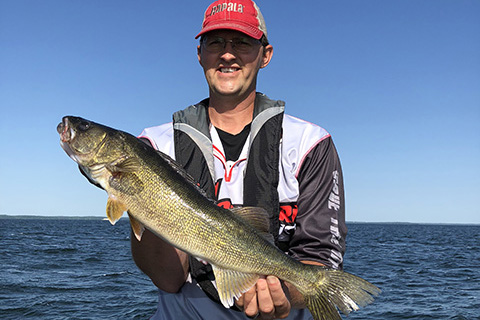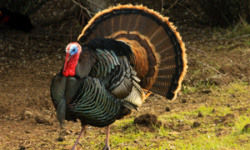By: Head Coach Jason Revermann
Now that spring finally had arrived, we can devise a plan of attack for catching those elusive walleyes. In areas where the walleye season closes during late winter then reopens after the spawn, it’s kind of like hitting a reset button. Consider many factors when developing a game plan for heading to the lake.
Spring conditions will influence where to start looking. Right around or shortly after ice-out walleyes move to shallow gravel areas with moving water to spawn. Females come in and lay their eggs, then slide out into deeper waters to recover. Males are in the shallows to do their thing and then will hang around the area a little longer in case a female shows up late. Walleyes usually feed heavy up until they spawn, take a little break to recover, then enter a feeding frenzy as water temps rise.
Many anglers rely too heavily on past fishing success to determine where they will begin searching for spring walleyes. In my opinion, look at past successes and analyze why fish were there, then use that information to create a game plan. Key factors include wind direction and speed, water temperature, cloud cover, and water clarity.
After walleyes have spawned and rested, they’re ready to eat. That is how I determine where to start looking for hungry walleyes. I try to determine where they are most likely to be feeding. Pay attention to the wind before you hit the water and let that determine which part of the lake you’ll begin searching. I want to be on either the wind-blown side of the lake or around structure that has been hit by some wind. Wind stirs up the water creating food for minnows that in turn draw in the walleyes and other predators.
Pay attention to the sun. When the sun rises walleyes often slide down into deeper water. Adjust accordingly to stay on a bite, and then towards evening – as the sun fades – follow them back up to shallower water.
This isn’t, however, always the case. Early in the spring when water temps are cold and the sun shines I have often seen walleyes hanging out in shallow water where they appear to be sunning themselves. Clear, calm water can mean a difficult bite, but slow rolling a jig and minnow or dangling a leech under a bobber can often entice these wary walleyes.
That’s just a start. If you are not having success, be sure to change it up. Don’t get stuck doing something all day that isn’t working. Change speed, bait, presentation, color, depth, or location. Make sure to use your electronics, and if you are not marking fish, move on.
Good luck fishing and stay safe!






